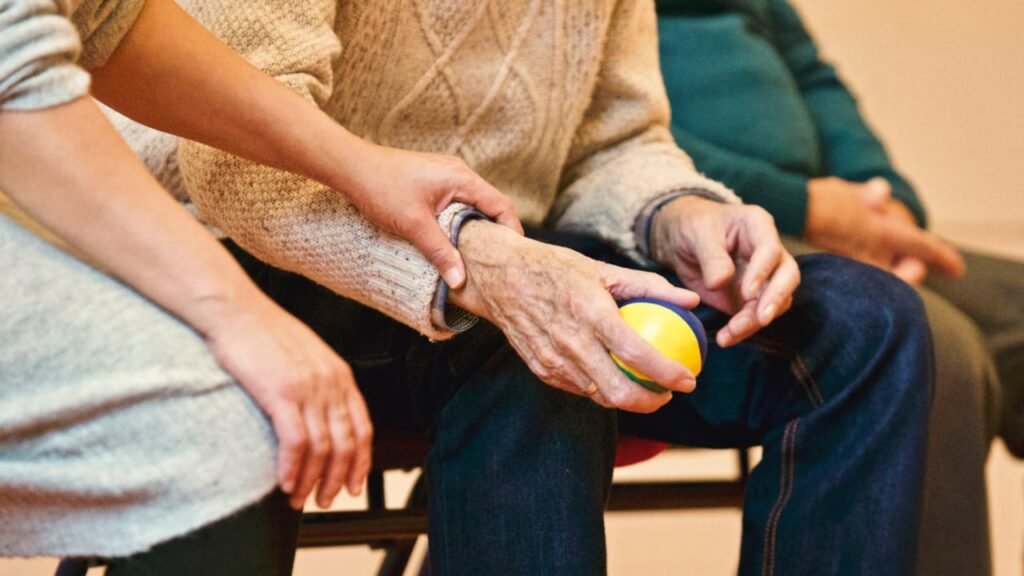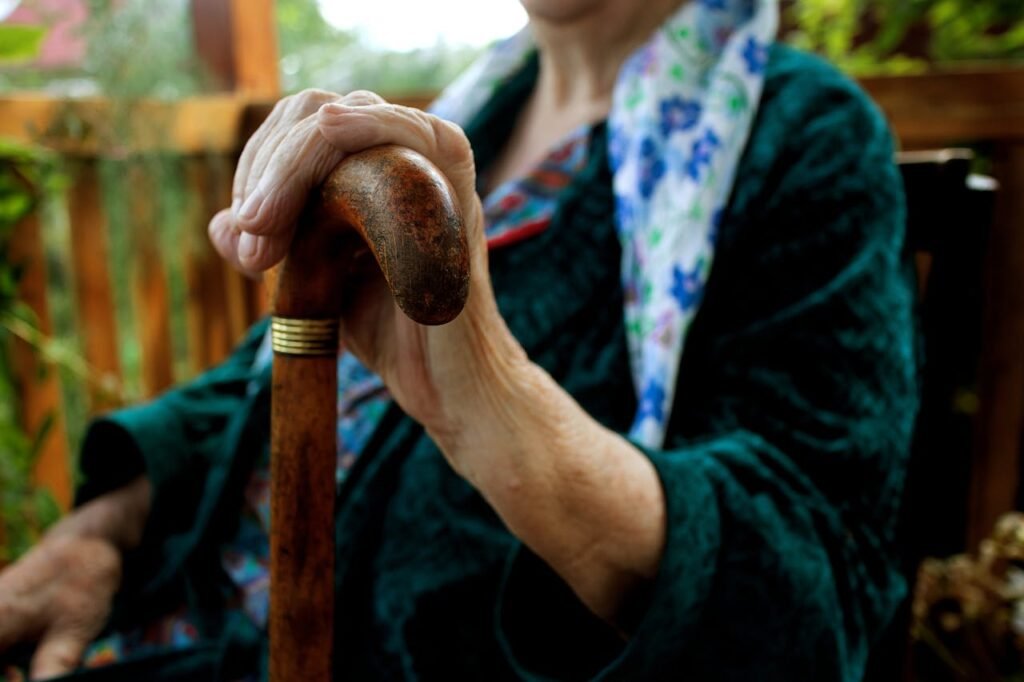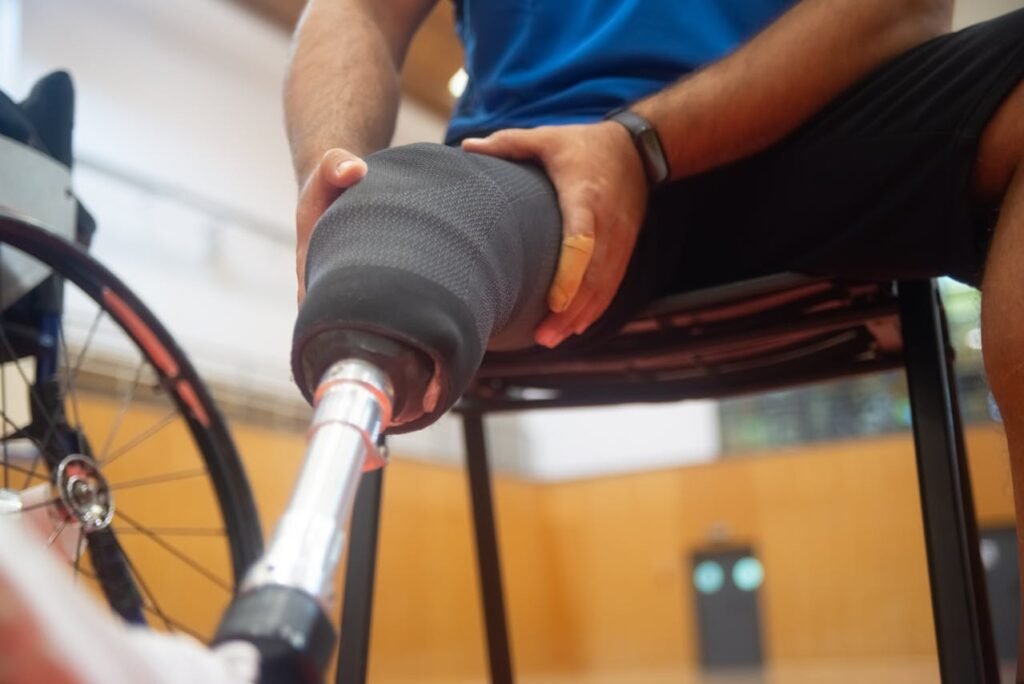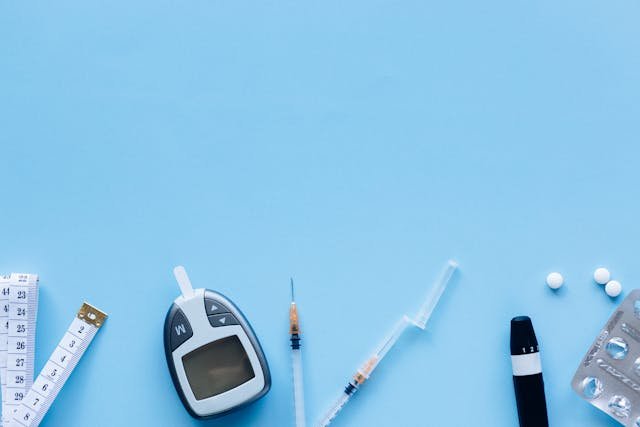For seniors living with diabetes, every step matters. And when you also use a prosthetic limb, caring for your skin and feet becomes even more important. Diabetes can make your skin fragile, slow down healing, and reduce how well you feel pain or pressure. These small changes can quickly turn into big problems if not watched carefully.
Daily foot and skin checks are your first line of defense. They protect you from infections, wounds, and discomfort, helping you stay safe and confident while using your prosthesis. The best part? These checks don’t need to be complicated. With a few minutes of mindful care each day, you can keep your skin healthy and your prosthetic comfortable.
At RoboBionics, we’ve worked with many diabetic seniors across India who’ve learned to make daily care simple and stress-free. This guide will show you easy, gentle ways to protect your skin, examine your feet, and maintain comfort with your prosthesis—so you can move freely and live fully, one safe step at a time.
Why Diabetic Seniors Need Daily Foot and Skin Checks
The Link Between Diabetes and Skin Health

Diabetes affects more than just blood sugar. It quietly changes how your body heals, how your skin protects itself, and how your nerves feel pain or temperature.
When blood sugar stays high, blood vessels can narrow. This slows circulation and reduces oxygen to your skin and muscles. The result? Cuts and blisters take longer to heal, and infections have more time to grow.
For seniors using prosthetics, this becomes even more important. The skin around the prosthetic socket, stump, or residual limb experiences pressure, friction, and heat every day. Without strong circulation, even small irritations can turn into serious sores.
That’s why daily checks aren’t optional—they’re essential.
Reduced Sensation and Hidden Injuries
Many seniors with diabetes also experience neuropathy, a condition that dulls the nerves in the legs and feet. You may not feel small injuries, burns, or tight spots the way you used to.
This means a blister or cut can go unnoticed for days until it becomes infected or painful. When wearing a prosthetic limb, the friction inside the socket can make such injuries worse without you realizing it.
Regular visual checks act as your “extra sense,” helping you catch problems early before they grow.
Why Prosthetic Users Are More Vulnerable
A prosthetic limb naturally places pressure on the skin where it connects to your body. Add diabetes, and that pressure becomes riskier. The skin may dry out faster, sweat less, or develop cracks more easily.
Also, prosthetic liners or socks trap heat and moisture—perfect conditions for bacterial growth. If your blood sugar is high, your body’s defense against infection weakens further.
This combination makes prevention your strongest tool. Gentle daily care keeps your skin safe, reduces irritation, and improves how your prosthesis fits and feels.
Early Checks Mean Fewer Complications
Many serious diabetic wounds begin as small, unnoticed problems—a small blister, a bit of redness, a patch of dryness.
When caught early, these heal quickly. But when ignored, they can deepen, spread infection, or even lead to tissue damage that complicates prosthetic use.
Daily checks help you act before it’s too late. You save yourself pain, treatment costs, and unnecessary stress by giving your skin just a few minutes of attention each day.
Setting Up Your Daily Foot and Skin Routine
Make It Part of Your Day
The easiest way to stick to your routine is to tie it to something you already do. You can check your feet and residual limb after bathing, before wearing your prosthesis, or at bedtime.
Doing it at the same time every day makes it a habit, not a chore. Once it becomes routine, you’ll naturally start noticing even small changes in your skin.
Keep your mirror, towel, lotion, and soft cloths in one place so you don’t have to search for them each time.
Use Proper Lighting and Tools
Good lighting is essential. Choose a bright, comfortable spot where you can clearly see all sides of your feet and limb.
If you have trouble bending, use a handheld mirror to check the bottoms of your feet or the back of your residual limb. You can also ask a family member to help if you’re unsure.
A magnifying mirror can be helpful for spotting small cracks or color changes early. It’s about catching the small signs before they grow.
Start with Clean, Dry Skin
Always begin with freshly cleaned skin. Use mild soap and warm water to wash your feet and residual limb. Avoid hot water, as it can dry your skin or even cause burns if you have reduced sensation.
Pat your skin dry gently—never rub harshly. Moisture trapped between your toes or under the liner can cause fungal infections, so dry those areas carefully.
Clean, dry skin is easier to inspect and less likely to develop irritation during prosthesis use.
The Three-Minute Check
You don’t need long, complicated routines. Three focused minutes are enough to notice key signs.
As you check, look for color changes, swelling, cuts, or shiny patches. Feel for warmth, roughness, or pain. Move slowly and pay attention to what feels different from yesterday.
Even if everything looks fine, this mindful scan keeps you connected to your body’s subtle changes. It’s one of the simplest ways to stay safe and independent.
How to Check the Residual Limb
Focus on areas where the prosthetic socket touches your skin most—typically the sides, back, and lower edge.
Look for any redness, blisters, or areas that seem unusually warm. These often indicate too much friction or pressure.
If you notice marks that don’t fade within 20 minutes after removing your prosthesis, inform your prosthetist. It could mean your socket needs adjustment.
Don’t forget to inspect folds of skin where moisture might collect. These hidden areas are common spots for fungal growth.
How to Check the Sound Foot
Even if you only use one prosthetic leg, your sound foot still carries most of your weight. This makes it vulnerable to overuse, swelling, and dryness.
Check between your toes for white or peeling skin, a sign of moisture buildup. Examine your heel and the ball of your foot for cracks or calluses.
If you see corns, avoid cutting them yourself. Let a podiatrist or diabetic care specialist handle them safely.
Healthy skin on your sound foot keeps your balance steady and prevents infections that could complicate your mobility.
Keeping the Skin Healthy and Strong
Moisturizing for Protection
Dry skin cracks easily, which can allow bacteria to enter. Moisturizing helps your skin stay flexible and resistant to friction.
Use gentle, fragrance-free lotions or creams made for sensitive skin. Apply them after washing and drying your feet and residual limb.
Avoid putting lotion between your toes or directly under your prosthetic liner, as trapped moisture can cause infection.
Massage the cream in with small circular motions to stimulate circulation and keep your skin supple.
Managing Sweat and Heat
Prosthetic sockets often trap heat, which can lead to sweating and irritation. Over time, this weakens the skin and creates friction burns.
Wipe your residual limb with a soft, clean cloth during breaks. Let it air-dry before reattaching your prosthesis.
If sweating is frequent, ask your prosthetist about breathable liners or moisture-absorbing powders made for prosthetic users.
Keeping your limb dry doesn’t just prevent discomfort—it helps your skin breathe and recover throughout the day.
Preventing Infections
Small cuts or sores can quickly become serious for diabetic seniors. To protect yourself, always keep your skin clean and avoid walking barefoot, even indoors.
Change your socks or liners daily, and wash them thoroughly. Use mild detergents and let them dry fully before wearing again.
If you notice any foul smell, discharge, or pus from a wound, contact your doctor immediately. Never apply antiseptic creams without medical advice, as some can harm sensitive skin.
Early action keeps minor issues from becoming major complications.
Watching for Color and Texture Changes
Changes in skin color can tell you a lot about circulation and pressure. Pale or blue-tinted areas may indicate poor blood flow, while red or shiny skin could mean irritation.
Hard or thick patches can signal that your prosthesis is rubbing too tightly in one spot. Bring this up during your next fitting appointment.
A soft cloth or gentle exfoliation can help remove dead skin, but never scrape or peel it off. Gentle care always wins with diabetic skin.
Strengthening the Skin with Good Circulation
Better circulation means stronger, healthier skin. Even small movements help. Wiggle your toes, move your ankle, or gently stretch your leg a few times a day.
When sitting, avoid crossing your legs for long periods—it restricts blood flow. Keep your legs elevated slightly to reduce swelling and encourage healthy circulation.
Regular light walking or gentle massage (avoiding open wounds) keeps the blood flowing and the skin nourished.
Spotting Warning Signs Early
Redness That Lasts Too Long

A little redness after removing your prosthesis is normal, especially in areas with more pressure. But if it lasts longer than 15 to 20 minutes, it means your skin isn’t recovering properly.
Persistent redness can be an early warning sign of friction or pressure sores. If the same spot stays irritated every day, your prosthesis may need adjusting.
Don’t ignore these small changes. They often signal that your skin is struggling to cope and needs a break or a fit correction.
Swelling and Puffiness
Swelling around the foot, ankle, or residual limb is another sign of trouble. It may indicate fluid buildup, infection, or poor circulation.
If you notice swelling that doesn’t go away after rest or feels warm to the touch, contact your doctor. Elevating your leg gently for short periods during the day can help reduce mild swelling, but persistent puffiness always needs professional attention.
Cuts, Blisters, or Open Wounds
Even the tiniest cut matters when you have diabetes. High blood sugar slows down healing, allowing bacteria to enter easily.
Check daily for blisters or small wounds caused by friction. If you find one, clean it gently with mild soap and water, apply a sterile dressing, and keep it dry.
Avoid using strong antiseptics or alcohol—they can dry out your skin and delay healing. Always inform your healthcare provider about any open wound, no matter how small it seems.
Changes in Temperature
If your skin feels unusually warm, it could signal infection or inflammation. On the other hand, if it feels cool or pale, blood flow might be reduced.
Touch different parts of your leg to compare temperatures. If one area stands out, especially near the prosthetic socket or foot, it’s worth checking with your prosthetist or doctor.
Temperature differences are often the body’s first cry for help—listen early.
Pain, Numbness, or Tingling
For many diabetic seniors, pain isn’t always sharp—it may feel like tingling, burning, or a dull ache. These are signs of nerve irritation or neuropathy.
If the feeling spreads or worsens over time, discuss it with your healthcare team. There may be ways to improve circulation or reduce nerve discomfort.
Never ignore tingling or numbness. When sensation fades, injuries become easier to miss and harder to heal.
Maintaining Prosthetic Hygiene
Cleanliness for Comfort
Your prosthesis touches your skin for hours every day. Sweat, dust, and skin oils can build up, creating irritation or odor if not cleaned regularly.
Wipe the inner surface of your socket each evening with a soft, damp cloth. If your prosthetist recommends it, use mild, fragrance-free soap. Rinse carefully and dry with a clean towel.
Keeping your prosthesis clean isn’t just about hygiene—it’s about protecting your skin from hidden irritants.
Caring for Liners and Socks
Your liners and socks act as the bridge between your limb and prosthesis. They need daily care too.
Wash them with mild detergent and warm (not hot) water. Avoid harsh chemicals that can weaken the fabric or cause skin allergies.
Let them air dry completely before wearing again. Moisture trapped in the material encourages bacterial growth and odor.
If a liner feels sticky, stiff, or cracked, replace it. Old liners can cause friction burns or uneven pressure on the skin.
Proper Fit and Maintenance
Over time, your limb may change shape slightly due to weight shifts or muscle tone. This can make your prosthetic fit tighter or looser.
A loose fit causes rubbing; a tight fit causes pinching. Both can harm the skin.
Visit your prosthetist every few months for a quick check-up. Even small socket adjustments can restore comfort and prevent long-term damage.
A perfectly fitting prosthesis protects not only your limb but also your confidence.
Managing Odor and Moisture
If you notice a persistent smell or damp feeling, it may be due to trapped sweat or bacterial buildup. Clean your prosthesis and liners thoroughly, and consider using prosthetic-specific deodorizing sprays if approved by your prosthetist.
Never use talcum powder or regular body powders inside the socket—they can clump, irritate your skin, and make cleaning difficult.
Instead, focus on keeping both your limb and your prosthesis dry throughout the day. A few short breaks for air circulation help immensely.
Inspecting for Damage
Every evening, take a quick look at your prosthesis. Check for cracks, loose joints, or worn-out parts.
A small structural issue can quickly turn into an imbalance or pressure problem that affects your skin and posture.
If something feels different or sounds unusual, stop using it and have it checked. A well-maintained prosthesis is safer and lasts much longer.
Nighttime Care for Healing and Recovery
Giving Your Skin Time to Breathe

At night, your skin deserves rest from the pressure of your prosthesis. Always remove it before sleeping to let your limb recover.
Gently clean your limb with warm water and mild soap, then pat dry. If needed, apply a light moisturizer to restore softness and prevent dryness overnight.
Keeping your limb uncovered for a few hours allows air circulation, helping your skin stay healthy and strong.
Using Compression Socks (If Advised)
Some diabetic seniors are advised to wear light compression socks at night to reduce swelling.
If your doctor recommends them, make sure they fit comfortably—not too tight or loose. Avoid folding the top band, as it can restrict blood flow.
Compression helps prevent fluid buildup and supports smooth circulation while you rest.
Elevating the Legs
Keeping your legs slightly elevated while lying down can improve blood flow and reduce swelling.
Use a soft pillow under your calves or feet—just enough to lift them slightly above your heart level.
This simple habit relieves pressure, promotes healing, and prevents stiffness by morning.
Inspecting Before Sleep
Before you go to bed, do one final quick check. Look for any redness or swelling that may have appeared after removing your prosthesis.
If something seems unusual, keep the area clean and dry overnight and avoid wearing your prosthesis until you’ve consulted your prosthetist or doctor.
Nighttime checks ensure small problems don’t become big ones by morning.
Rest and Relaxation for Better Circulation
Good sleep supports good healing. Your body repairs tissues, balances fluids, and restores energy while you rest.
Try to go to bed at the same time each night and keep your sleeping area cool and comfortable.
Stress and poor sleep can raise blood sugar and make your skin more fragile. A calm, regular routine is as important for your skin as any cream or ointment.
Long-Term Diabetic Foot Safety
Regular Medical Check-Ups
Even if you feel fine, schedule regular appointments with your doctor and prosthetist. Routine exams help spot circulation problems, nerve damage, or skin issues early.
Your healthcare team can also measure how well your prosthesis fits and make adjustments before discomfort starts.
Preventive care always costs less—in time, effort, and pain—than treatment after a problem develops.
Managing Blood Sugar for Healthy Skin
Stable blood sugar keeps your skin resilient and responsive. When your sugar levels stay within range, your circulation improves and your body heals faster.
Monitor your levels regularly, follow your doctor’s advice, and aim for balanced meals that support steady energy.
Think of blood sugar control as the foundation of all your skin care efforts—it makes every other step more effective.
Choosing the Right Footwear
For your sound foot, wear shoes that fit properly and provide cushioning. Avoid tight straps or rough edges that can rub against your skin.
Check the inside of your shoes each day for pebbles or wrinkles in the lining—small irritants that can cause big injuries if unnoticed.
Diabetic-friendly footwear is worth investing in. It supports balance, comfort, and protection with every step.
Staying Active Safely
Gentle movement is one of the best ways to improve circulation and prevent foot complications.
Short daily walks, seated leg stretches, or light yoga keep your muscles active and your blood flowing.
If your prosthesis feels uncomfortable during activity, stop and rest. Pain is your body’s way of asking for attention. Move with care, not hurry.
Partnering with RoboBionics for Comfort and Safety
At RoboBionics, we believe mobility should never come at the cost of comfort. Our prosthetics are designed to fit naturally, reduce pressure, and allow your skin to breathe.
We work closely with diabetic seniors across India to ensure every prosthesis feels right, protects the skin, and supports a safe daily routine.
From custom socket designs to soft, skin-friendly materials, every detail is made with care and understanding.
If you’d like personalized guidance or wish to explore prosthetic solutions tailored to diabetic needs, you can schedule a demo at robobionics.in/bookdemo.
Your feet carry you through life’s journey—let’s make sure every step feels safe, comfortable, and confident.



